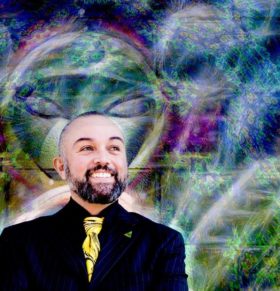Xochipilli is the god of art, games, beauty, dance, flowers, and song in Aztec mythology. His name contains the Nahuatl words xochitl (“flower”) and pilli (either “prince” or “child”), and hence means “flower prince”. As the patron of writing and painting, he was called Chicomexochitl the “Seven-flower,” but he could also be referred to as Macuilxochitl “Five-flower.” His wife is the human girl Mayahuel, and his twin sister is Xochiquetzal. As one of the gods responsible for fertility and agricultural produce, he is also associated with Tlaloc (god of rain), and Cinteotl (god of maize). Xochipilli corresponds to the Tonsured Maize God among the Classic Mayas.
In the mid-19th century, a 16th-century Aztec statue of Xochipilli was unearthed on the side of the volcano Popocatépetl near Tlalmanalco. The statue is of a single figure seated upon a temple-like base. Both the statue and the base upon which it sits are covered in carvings of sacred and psychoactive organisms including mushrooms (Psilocybe aztecorum), tobacco (Nicotiana tabacum), Ololiúqui (Turbina corymbosa), sinicuichi (Heimia salicifolia), possibly cacahuaxochitl (Quararibea funebris), and one unidentified flower.
It has been suggested by Wasson, Schultes, and Hofmann that the statue of Xochipilli represents a figure in the throes of entheogenic ecstasy. The position and expression of the body, in combination with the very clear representations of hallucinogenic plants which are known to have been used in sacred contexts by the Aztec support this interpretation. Wasson says that in the statue’s depiction Xochipilli “is absorbed by temicxoch, ‘dream flowers’, as the Nahua say describing the awesome experience that follows the ingestion of an entheogen. I can think of nothing like it in the long and rich history of European art: Xochipilli absorbed in temicxoch.”
Because of how few images are available online, I’ve decided to make my personal pictures of this statue public here. All images are © Mitchell Gomez, 2017.










































